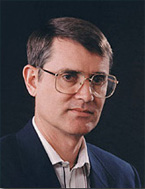Carbon Storage Research Receives $15 Million at The University of Texas at Austin
April 29, 2009

With a $15.5 million grant, scientists and engineers aim to provide the fundamental science for geological storage of greenhouse gases as part of an Energy Frontier Research Center (EFRCs) established at The University of Texas at Austin by the U.S. Department of Energy (DOE).
The White House announced the creation of 46 new EFRCs nationally in conjunction with a speech delivered by President Barack Obama at the annual meeting of the National Academy of Sciences.
The EFRC grant will fund the Center for Frontiers of Subsurface Energy Security, led by Gary Pope, holder of the Texaco Centennial Chair in Petroleum and Geosystems Engineering. DOE plans to fund this EFRC at $15.5 million over a five-year period in partnership with Sandia National Laboratory.
The goal of the center is to explain the movement or transport of carbon dioxide and other greenhouse gases in geological systems.
“Developing long-term solutions for our national energy security requires significant advances in understanding geological systems where we can lock away the byproducts of energy consumption, such as carbon dioxide,” said Pope. “The long-term benefits from this improved understanding will extend far beyond the current focus on the storage of greenhouse gases to understanding the stability of geological systems and materials that are far from equilibrium for long periods of time—a Grand Challenge problem.”
The interdisciplinary team in the Cockrell School of Engineering and the Jackson School of Geosciences at the university and the Engineering Sciences Center at Sandia National Laboratory combines expertise in basin analysis, reservoir engineering and fine-scale geophysical and geochemical modeling. Art Ratzel, director of the Engineering Sciences Center at Sandia, and Mary Wheeler, holder of the Ernest and Virginia Cockrell Chair in Engineering at the university, are associate directors of the new center.
This represents the strongest geotechnical team ever assembled to work together within such a center, according to Pope.
“As global energy demand grows over this century, there is an urgent need to reduce our dependence on fossil fuels and imported oil and curtail greenhouse gas emissions,” said U.S. Secretary of Energy Steven Chu. “Meeting this challenge will require significant scientific advances. These centers will mobilize the enormous talents and skills of our nation’s scientific workforce in pursuit of the breakthroughs that are essential to make alternative and renewable energy truly viable as large-scale replacements for fossil fuels.”
A second EFRC established at the university will focus on better understanding the molecular processes that underpin innovative nanomaterials that may be used in solar energy and batteries.
More information on the EFRCs can be found on the DOE’s Web site.
For more information about research at the Jackson School, contact J.B. Bird at jbird@jsg.utexas.edu, 512-232-9623.
